We shop online, date online and buy cars online, so why not learn online too?
Millions of people already do.
The eLearning market is estimated to be worth $399.3 billion in 2022 with a growth rate of 14% through 2023 to 2032.
If you want to get into eLearning, either as a side venture or as someone that runs an online course website, this post is for you.
We’re going to cover what eLearning is, what it does, what it offers and how everything works.
By the end, you’ll know everything you need to make an informed decision about your future education!
What is eLearning?
eLearning is short for electronic learning. It provides access to course content, quizzes, tests, online communities and whatever else is relevant to a course.
The format of a course can differ drastically.
Some eLearning courses will be in traditional written form with a test at the end. Others will be a follow-along video or interactive workshop.
There are also video-only or audio-only courses available too. There are also courses with a mixture of all those things.
Whatever style of learning works best for you, eLearning can accommodate it.
eLearning is huge.
Even before the pandemic, online learning was becoming the default way to gain new skills, get certified and access a host of online courses and qualifications.
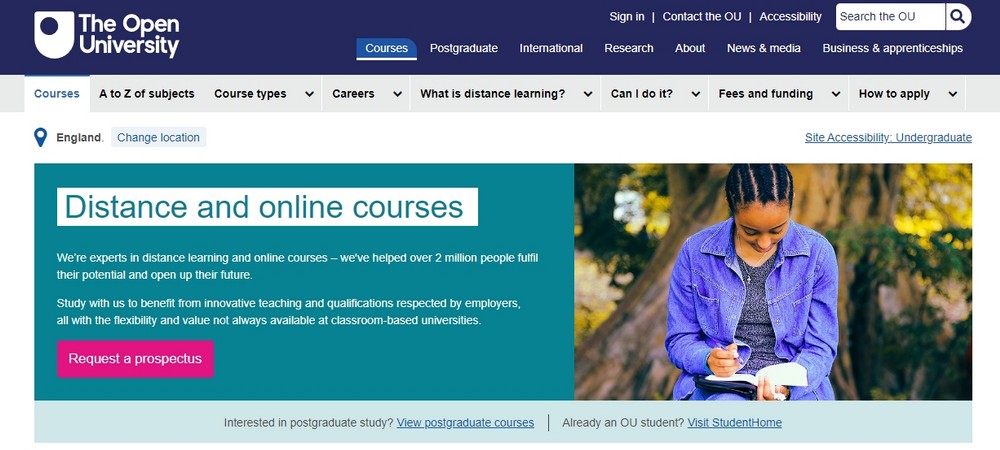
Schools, colleges and universities have all embraced eLearning. Some offer complete online courses while others use a mix of classroom and online.
Either way, eLearning opens up the potential of education to everyone.
Some interesting eLearning stats to illustrate our point:
- 42% of organizations have experienced an increase in income since introducing eLearning as part of their training.
- Online learning is the fastest-growing market in the education industry with a 900% growth rate globally since the year 2000.
- Online learning reportedly reduces energy consumption by 90% compared to classroom learning.
- eLearning increases information retention rates up to 60% compared to 8-10% for traditional learning.
Physical learning vs eLearning
eLearning isn’t replacing physical learning in schools and colleges, but it is for businesses and many other areas of society.
It is being adopted within some traditional learning environments, but usually as an additional resource rather than classroom replacement. That may change in the future though.
The classroom teaches much more than the subject in question. It also teaches social skills, listening skills, how to follow directions, how to interact in formal settings and so much more.

How eLearning has disrupted traditional learning methods
Like many new innovations, eLearning has been a disruptor. It has taken traditional ways of doing things and turned them on their head.
Mostly for the good.
Here are a few ways eLearning has disrupted traditional learning methods:
Open to anyone – Online learning opens education up to anyone. As long as you have an internet connection, you can develop yourself. Whether accessed via schools, colleges or universities, at work or through one of the many online course providers.
Easily accessible – Anyone with internet access and a phone or computer can learn. No more having to move closer to class or commute to campus. No having to spend a fortune on tuition fees or spending 3 years or more in student accommodation.
Few prerequisites – Online learning is often open to anyone even if they don’t have qualifications. Some professional qualifications may have prerequisites, but many non-accredited courses won’t.
Always changing and adapting – It still takes a lot of effort to create quality courses but it’s much faster and easier to change an eLearning course than a classroom-led course.
Often low cost – Rather than spending thousands on a diploma or degree, you can access similar quality learning at a fraction of the price. Many courses are even free!
Self-paced – One significant downside of classroom learning is pacing. You either have to learn at the pace of the slowest in class or slow learners are left behind. Many online courses are self-paced so you can learn at whatever pace you’re comfortable with.
Examples of eLearning in action
Want to see some real life examples of online learning in action?
Udemy

Udemy is one of the largest online learning portals in the world. It has thousands of courses covering everything from needlework to financial planning.
The majority of courses on Udemy are video and are non-accredited. They can provide the same quality of training as accredited courses but you’ll need to sit the exam to have letters after your name.
Coursera
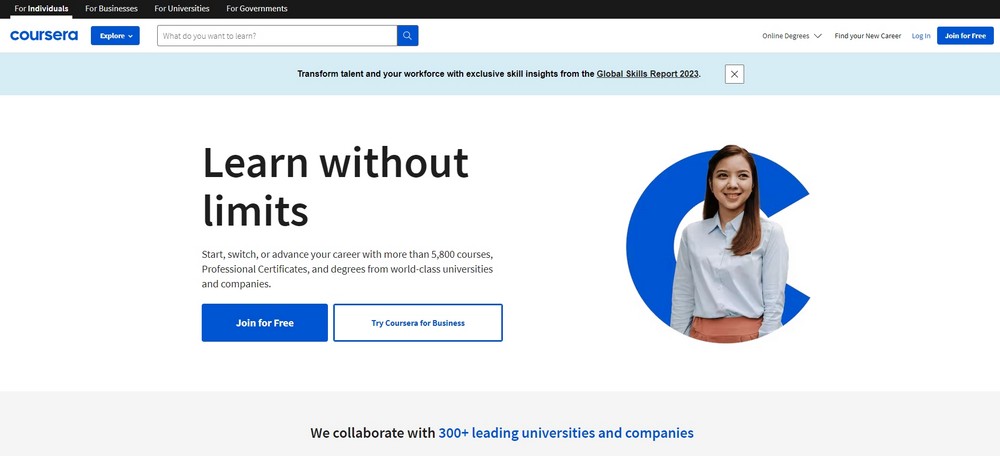
Coursera is similar to Udemy but leans more towards providing structured training and degree courses. It works with businesses, universities and governments to provide online learning.
Courses are many and varied and include full degree courses and masters as well as shorter courses.
LinkedIn Learning

LinkedIn Learning offers online courses as part of the professional social network. There’s a mix of topics relevant to business, skills and relevant topics. It’s a premium platform that you pay to access and then can take any courses you like.
Most courses aren’t accredited but many offer high quality teaching that impart essential business skills.
There are many other learning platforms available but they will all offer similar solutions to these three.
eLearning tools and technologies
So we now know what eLearning is, the benefits it brings and have seen three top online learning portals in action.
Now let’s explore how you, or anyone, could build their own learning platform.
There are 3 technologies that can play an important role in online learning:
- A Learning management system (LMS)
- Virtual reality or augmented reality
- Adaptive learning
Let’s take a quick look at each.
Learning management systems (LMS)
Learning management systems are applications that provide the structure for online courses.
LMS such as LearnDash, Sure Members + SureCart, Adobe Learning Manager, MemberPress and LifterLMS, all make it easy to create online courses.
WordPress.org has over 250 plugins for LMS. It’s a huge market with a huge variety of available platforms.
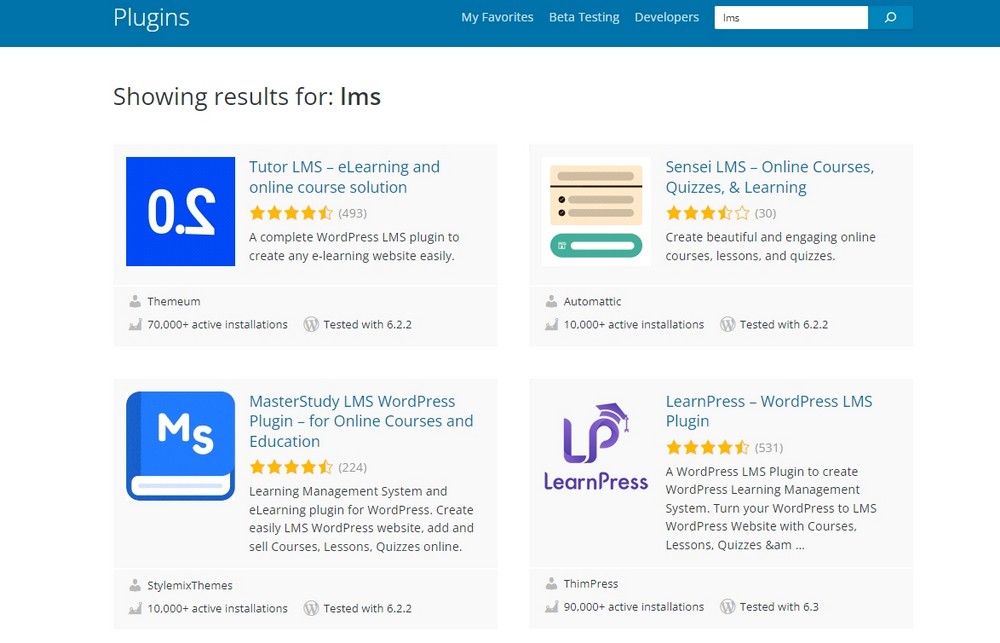
Benefits of LMS for both course websites and students:
- Can turn any website into an online course portal
- Provides the structure and tools to create online courses
- Supports video, audio, written content
- Can include quizzes, certification and gamification elements
- Option for forums, chat and interactions
- Ability to drip feed course content to avoid binging
- Full control over courses and income
- Ability to include forums, chat and gamification
- Adapt quickly to changes in technology and appetite
Virtual reality (VR) and augmented reality (AR)
While virtual reality hasn’t yet taken off in the mainstream, it has experienced wide acceptance in eLearning. The same for augmented reality.
A number of niches make great use of both technologies.
The medical industry uses VR and AR to help train doctors, surgeons and other specialists.
Architects and construction firms use them to train new architects, designers and construction professionals.
Engineering also uses VR and AR to train new engineers in a variety of disciplines.
Both AR and VR benefit online learning by:
- Providing immersive learning experiences as close to reality as possible
- Visual learning opportunities not easily accessible such as surgery
- Ability to see in three dimensions and manipulate the field of view
- Supports online learning and can work with LMS courses
This example of nursing training using virtual reality is a real life example of how technology can aid in learning.
Adaptive learning
Adaptive learning is almost uniquely available for online learning. While some specialist schools try to take into account all levels of ability, there are practical constraints.
There are no constraints with adaptive learning. You can provide all the learning materials a student may require and personalize the experience with extra resources to match any particular needs.
To enhance how these materials are delivered or showcased, educators and creators can use the best AI presentation generators to craft visually engaging and customized learning experiences effortlessly.
This overcomes the pacing challenge of classroom learning. You can learn at your own pace, in your own style and the adaptive learning platform adjusts to your needs.
Key challenges of eLearning + solutions
As well as unique opportunities, online learning also provides some unique challenges.
Nothing is insurmountable though!
Here are three challenges we have come across when managing eLearning courses or while being a student:
Challenge 1 – eLearning requires self-discipline
For all its faults, the classroom ensures everyone pays attention and has the same opportunity to learn with minimal distractions.
The same cannot be said for learning at home. It’s easy to be distracted by the TV, internet, your phone or your children.
The answer
Make the course as interesting as possible and use gamification elements such as badges, levels and achievements to encourage learning.
Also encourage students to set aside time for study and set clear, achievable goals to keep them motivated.
Our friend Adam Preiser at WPCrafter explains gamification in detail in this video:
Challenge 2 – Lack of technical expertise
Millennials and younger learners should have no issues with eLearning, but not all students will be young.
Some online learners may be retraining in later life or pursuing professional skills to develop their career.
The answer
Provide full step by step tutorials for using your LMS using a combination of written and video content. Also consider providing live support using web chat where you can talk to students through the system.
Challenge 3 – Less social than class
Online learning is typically performed at home, on your own. That can lead to a feeling of isolation and doesn’t have the social aspects of a classroom.
Some students cope very well with this while others can find it more challenging.
The answer
Include interactive and social elements within courses. Consider adding a live chat function, forum, video or voice meeting rooms.
Encourage participation and create an atmosphere where students are comfortable speaking up, posting in forums and interacting.
Future trends in eLearning
So we know what’s possible with eLearning now, but what about in the future? What does the future hold for online learning?
The predicted trends in learning reflect those in society at large, namely:
Artificial intelligence (AI) and machine learning (ML)
AI is changing everything, including online learning. AI and ML are already being used to create adaptive learning courses for a range of unique needs. Organizations exploring advanced automation in course development may also consider scale alternatives that offer more flexible and cost-efficient AI-powered solutions.
The technologies are also enabling VR and AR elements within courses and content for a huge range of courses.
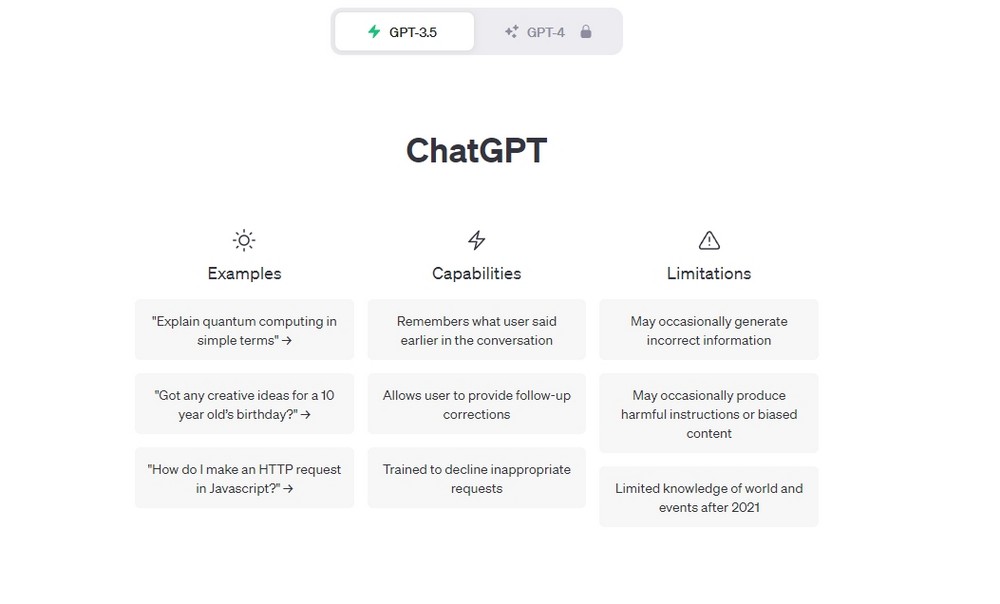
Additionally, the integration of voice AI technologies can further enhance educational experiences, offering innovative ways for students to interact with learning materials and access information.
Microlearning and bite sized content
Microlearning and bite sized content are being developed to deliver on our increased need for instant gratification and increasingly small attention spans.
Rather than 1-2 hour lessons, microlearning splits them into 5-10 minute pieces. You can then fit them into your life whenever you have the time or desire.
Again, we expect to see a lot more of this in the future.
We’re all getting busier and microlearning fits into that without requiring you to set aside hours to learn.
Social learning and collaborative tools
Social learning helps overcome the feeling of isolation that can come with eLearning.
New collaborative tools are enabling either synchronous or asynchronous learning where students can watch other students as they learn and vice versa.
It’s harder to explain than experience but this is going to change eLearning forever!
eLearning and business opportunities
Online learning can be philanthropic, where you give your knowledge away for the greater good. Or it can be for profit, where you charge a fee for access.
There is no right or wrong way to work, but many people are making a healthy living out of eLearning.

eLearning website for general learning
eLearning comes in many forms, one of which is generalist courses for almost any subject you can imagine.
Once you have created a course, you could set up your own eLearning website and create or host courses and keep all the profit.
Or you could use an online learning platform like Udemy to host your courses for you.
Either way, you can provide eLearning and charge for it as a business.
We would recommend setting up your own eLearning website. While it’s more work, it also provides full control over the courses, the content, the data and the profits.
Rather than paying a platform commission every time you sell a course, you get to keep whatever profit you make.
You will need to pay for web hosting, a domain and any premium themes or plugins though.
Use WordPress, the free Astra theme, a and a free learning management system and you reduce costs to just hosting and domain.
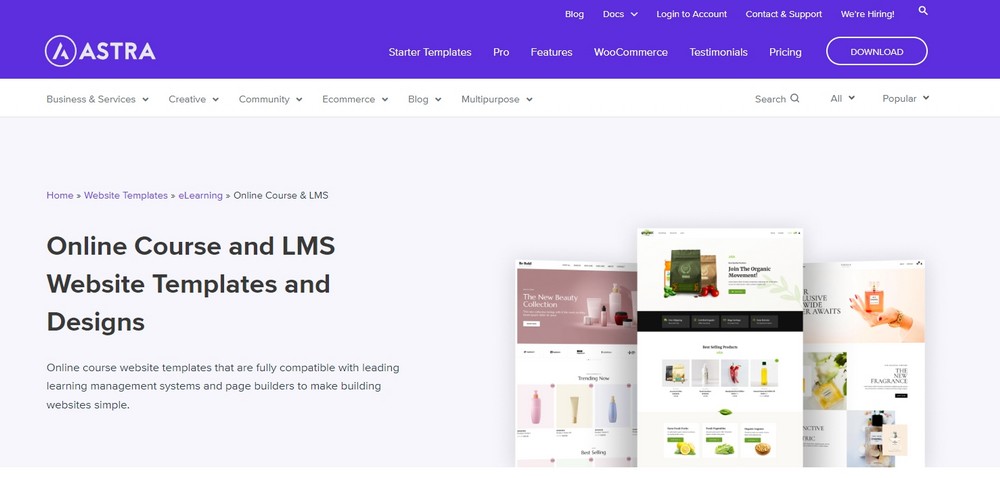
That could cost less than $100 per year and require less than an afternoon’s work.
Use ZipWP and you could build a first draft website in less than 60 seconds!
Offering business training via the web
The other way to run an eLearning business is to offer more formal business training.
Your target market is narrower than general learning but the potential rewards could be higher. Businesses are often willing to pay more for training than individuals.
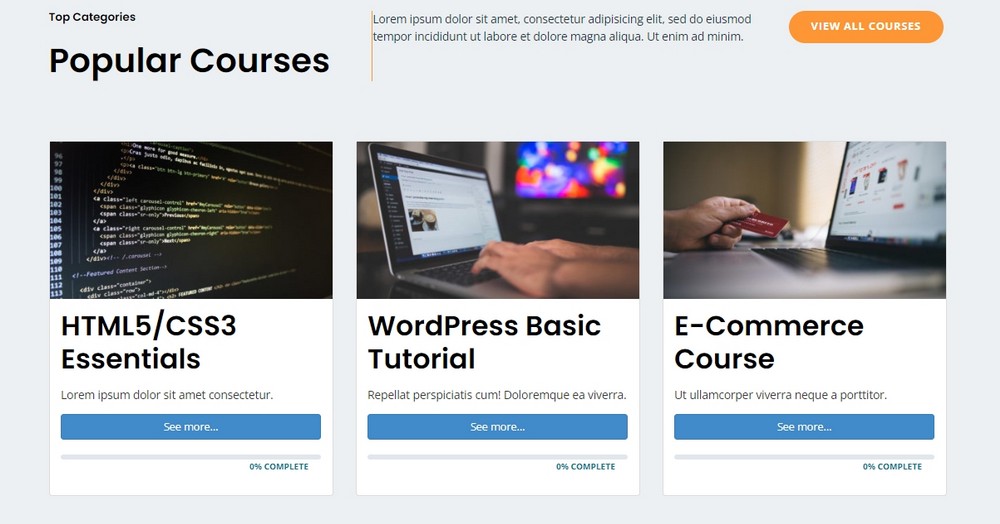
You will need to deliver higher quality training in return though!
Again, you could use a third party platform like AccessPlanIT or another provider or set up your own website.
The same pros and cons apply here as they do for general learning.
We would make the same recommendation too. Setting up your own eLearning website is more work but offers more rewards too.
Use WordPress, the Astra theme, SureMembers to handle the paywall and SureCart to handle payments, and you’re ready to earn.
Conclusion
eLearning has changed education forever. Few recent developments in society have had such a dramatic impact over an industry and there’s no going back.
Students have embraced eLearning, businesses have embraced it, even schools, colleges and universities have embraced it.
That provides huge opportunities for anyone who can create good quality courses and has the vision to offer them as a business.
If that sounds like you, the rest of the eLearning business is a breeze. Set up your own website or use an online learning platform and who knows where it will take you!
Have you created an online course website? Do you make any money from it? Have any tips for aspiring course creators? Share your story in the comments!
Disclosure: This blog may contain affiliate links. If you make a purchase through one of these links, we may receive a small commission. Read disclosure. Rest assured that we only recommend products that we have personally used and believe will add value to our readers. Thanks for your support!

Recommended Articles
Innovative Membership Site Ideas To Inspire Your Next Venture in 2024
Subscription vs membership – Which pricing model suits your business best?